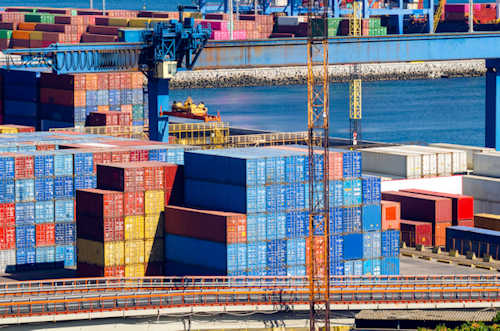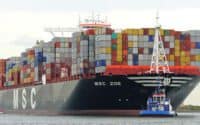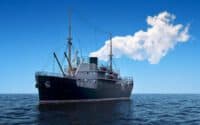Peak Season Preparedness: Gearing Up for the Cargo Shipping Busy Season

The Significance of the Peak Season: Every year, the cargo shipping industry witnesses a surge in activity, known as the peak season. This period, which varies slightly depending on global market dynamics, represents a time when the demand for shipping space exceeds supply, often dramatically. The reasons for this surge are multifaceted, but the implications are clear: shipping lines and ports must be at the top of their game to accommodate the upswing in activity.
* Please send feedback/suggestions to editor @ shipuniverse.com
Cyclical Challenges: Like clockwork, the peak season brings with it a set of recurring challenges. Ports become congested, shipping schedules face disruptions, and the pressure mounts on logistics teams to ensure timely deliveries. Addressing these challenges is not just about managing the current season but also about learning and evolving for the years to come.
II. Understanding the Peak Season
Historical Context: If we trace back the trends from the past few years, the peak season’s intensity has only grown. Whether it’s the volumes of goods shipped or the congestion at ports, there’s a discernible increase. For instance, in 2019, certain major ports witnessed container volumes that surpassed their previous records by significant margins.
Factors Driving Demand: Several factors converge to drive demand during the peak season. The rise of e-commerce has changed consumer behavior, leading to an insatiable demand for products year-round, but particularly during holiday seasons. Traditional holiday shopping, especially in the West around Christmas, requires goods to be shipped well in advance. Add to that the seasonal market movements, such as the harvest of certain agricultural products or the release of new tech products, and the result is a heightened demand for cargo shipping space.
III. Capacity Expansions
New Vessel Introductions: To meet the mounting demand, shipping lines often introduce new vessels. These aren’t just any vessels; they are mega-ships, boasting enormous capacities. For instance, the latest class of container ships can carry over 20,000 twenty-foot equivalent units (TEUs) – a stark contrast to their predecessors from just a decade ago. These ships are strategically deployed on routes that experience the highest demand, ensuring maximum utilization.
Port and Terminal Upgrades: It’s not just about having larger ships; the ports need to be equipped to handle them. This has led to significant investments in port infrastructure. Expanding quays, deepening berths, and enhancing crane capabilities are just a few of the measures undertaken. Additionally, extended storage areas ensure that there’s adequate space to manage the influx of containers during the peak period.
IV. Strategic Route Planning
Navigating Choke Points: Every shipping line understands the significance of major ports and canals – they are the lifeblood of global trade. But during peak seasons, these vital points can become congested, leading to delays and inefficiencies. To navigate these challenges, shipping lines employ advanced analytics to predict bottlenecks, allowing them to adjust schedules and allocate resources more effectively.
Alternative Route Considerations: While major pathways are essential, they aren’t the only options. In the quest for efficiency, many shipping companies are exploring alternative routes. These might be slightly longer or less traditional but can bypass congestion points, resulting in more predictable shipping times.
Balancing Speed and Efficiency: The age-old conundrum of speed versus efficiency continues to challenge the maritime industry. While faster routes can ensure timely deliveries, they often come with increased fuel costs. Here, the decision isn’t merely financial. Environmental concerns, particularly the push towards reduced carbon emissions, are influencing choices, leading to a delicate balance between speed and fuel-efficient routes.
V. Supply Chain Resilience
Digital Technology’s Vital Role: As the shipping industry evolves, so too does its reliance on technology. Digital tools, particularly Artificial Intelligence (AI) and the Internet of Things (IoT), are revolutionizing how shipping lines monitor cargo. Real-time tracking, coupled with predictive analytics, allows for quicker decision-making, optimizing routes, and managing unforeseen challenges.
Diversification Strategies: Relying heavily on a single supplier or a specific route can be risky, especially in an unpredictable global climate. Forward-thinking shipping lines are thus broadening their horizons, diversifying their suppliers and considering multiple routes. This approach not only spreads risk but also offers flexibility in adjusting to market demands.
Risk Mitigation: The world is full of uncertainties – be it erratic weather patterns, geopolitical tensions, or health crises like the COVID-19 pandemic. To ensure continuity and reliability, shipping companies are investing heavily in risk mitigation strategies. These range from comprehensive insurance policies to having contingency plans in place, ensuring that the supply chain remains unaffected regardless of the disruptions thrown its way.
VI. Collaborative Efforts
Shipping Alliances: In a vast and intricate industry like cargo shipping, teamwork can be the key to smooth operations. Major shipping lines often form alliances, pooling their resources and expertise to ensure optimal utilization of vessel capacities. These alliances enable members to share space on each other’s vessels, optimizing routes and ensuring timely deliveries even during high-demand periods.
Port and Shipper Coordination: The relationship between ports and shippers is pivotal. As ships dock, the processes that follow – unloading, paperwork, reloading, and departure – need to be seamless. Enhanced communication tools and advanced scheduling systems are helping reduce dwell times, ensuring ships are turned around faster and thus, improving overall efficiency.
VII. Preparing the Workforce
Training and Readiness: Peak seasons bring heightened activity, and with that comes the need for a skilled and prepared workforce. Training programs, both theoretical and on-field, ensure that crews and port workers are updated on best practices, safety protocols, and the use of new technologies. A well-trained workforce is pivotal in handling the increased volumes with precision.
Crew Welfare: The demands of the peak season aren’t just physical; they take a toll mentally too. Recognizing this, many shipping companies are introducing wellness programs focusing on the mental and physical well-being of their staff. Initiatives like counseling sessions, health check-ups, and rotational breaks are being incorporated to keep morale high and stress levels low.
Recommendations
- Embrace Technology: Advanced analytics, AI, and IoT should be at the heart of operations. They provide insights, improve predictability, and enhance overall efficiency.
- Strengthen Communication: Regular dialogue between shipping lines, ports, and stakeholders ensures synchronization, reducing potential bottlenecks.
- Prioritize Safety: Peak season demands should never compromise safety. Regular drills, safety equipment checks, and training sessions should be integral.
- Diversify and Innovate: Exploring alternative routes, diversifying suppliers, and being open to innovative solutions can be the difference between average and excellent peak season performance.
- Invest in People: A motivated, well-trained workforce is the backbone of the industry. Continued investments in training and welfare ensure consistent peak season success.
By keeping these considerations in mind, stakeholders across the cargo shipping spectrum can navigate the challenges of the peak season effectively, delivering value and reliability to the global market.

Do you have a Maritime Product or Service that may be of interest to Shipowners? Tell us about it here!
Do you have feedback or insights? Please reach out to editor @ shipuniverse.com




